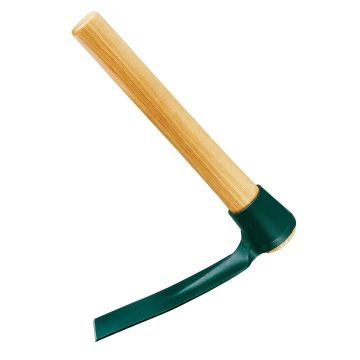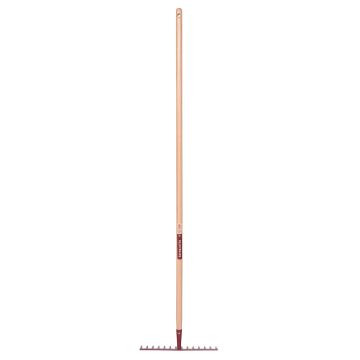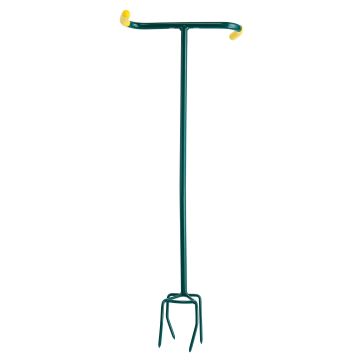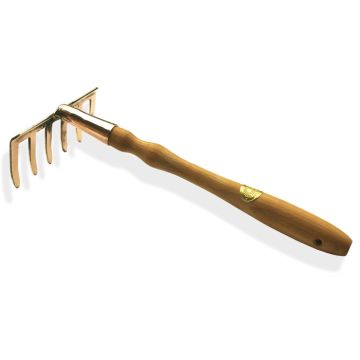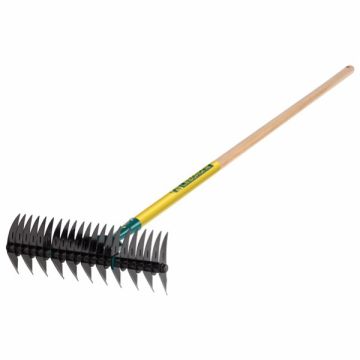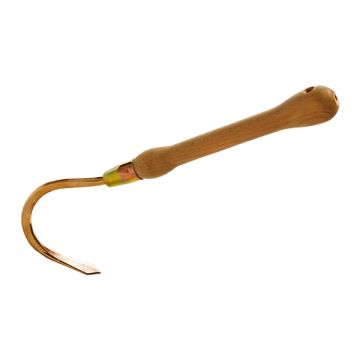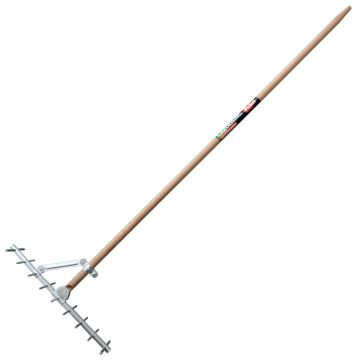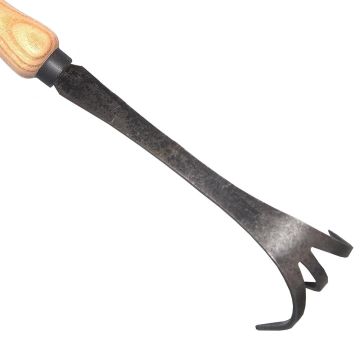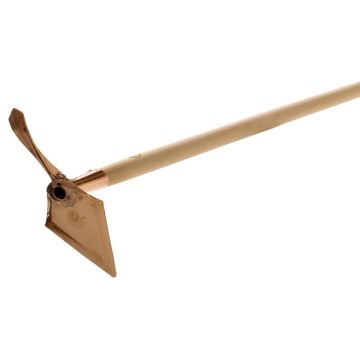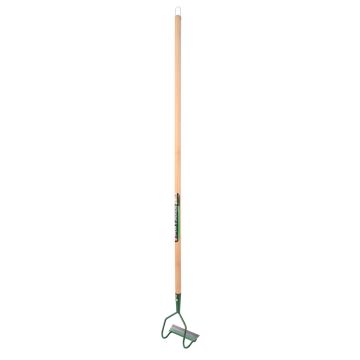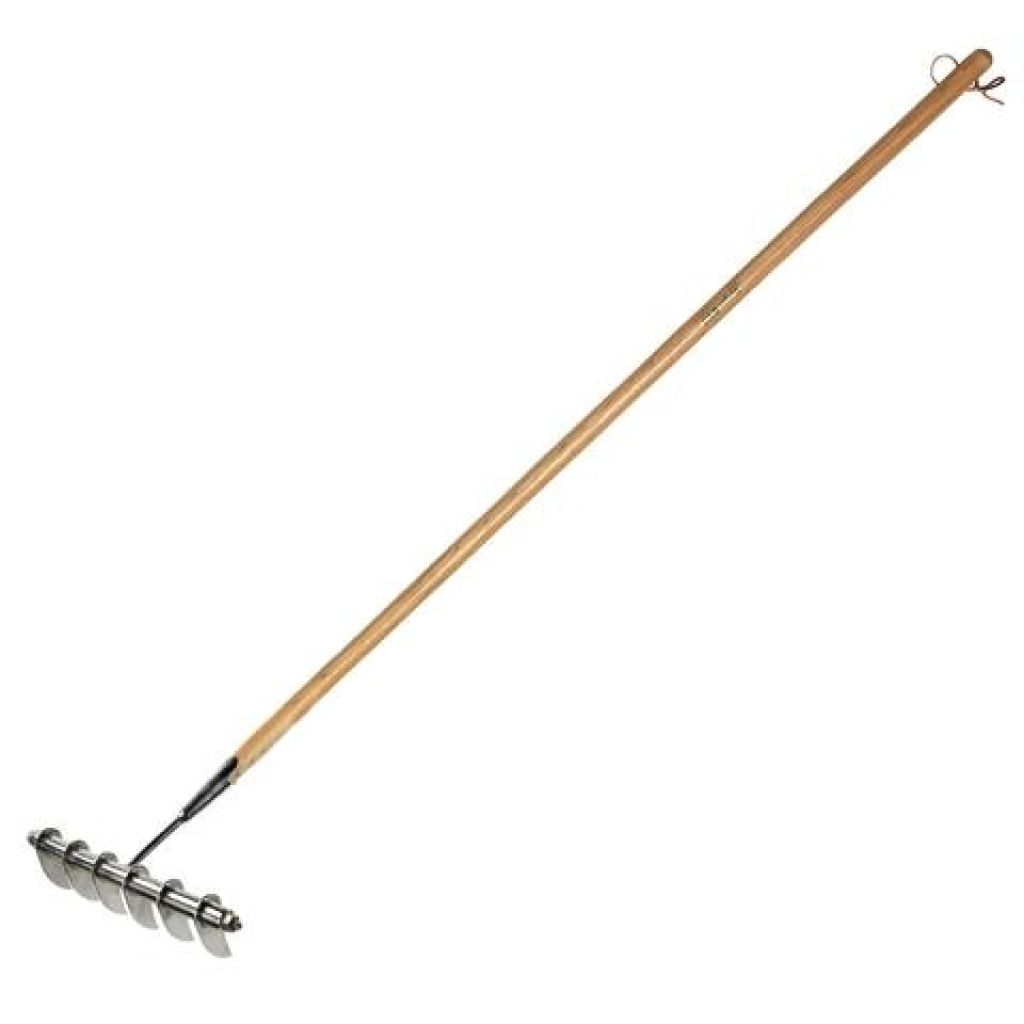

Short grass meadow scarifier by Burgon & Ball - RHS Range
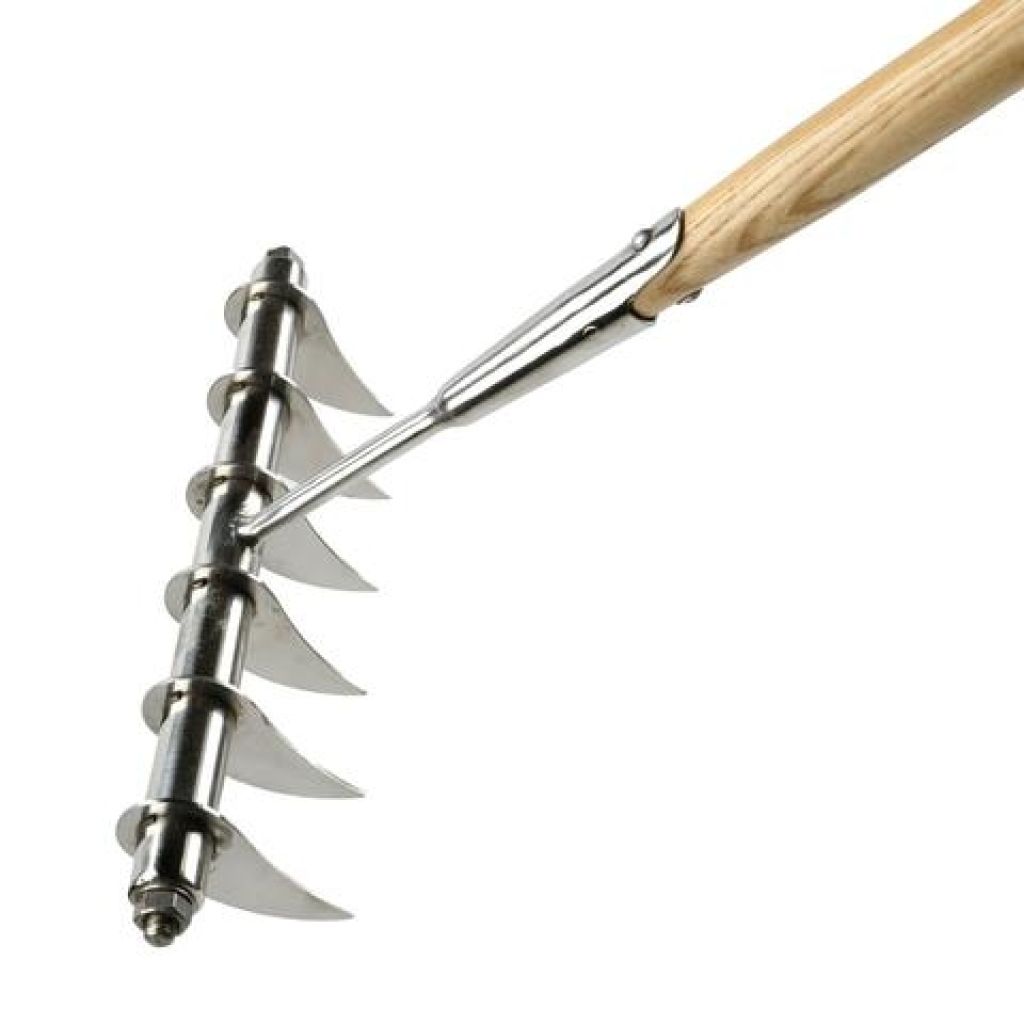

Short grass meadow scarifier by Burgon & Ball - RHS Range
Short grass meadow scarifier by Burgon & Ball - RHS Range
We guarantee the quality of our plants for a full growing cycle, and will replace at our expense any plant that fails to recover under normal climatic and planting conditions.
Oversize package: home delivery by special carrier from €6.90 per order..
Express home delivery from €8.90.
This Spear & Jackson classic double-toothed scarifier has six intelligently designed teeth to aerate the lawn, remove dead plant material, and cut roots to stimulate new growth. The angled blades cut on the push and gather debris on the return pull. The blade angle is adjustable, allowing you to achieve the ideal setting for your height and technique. The stainless steel of this scarifying rake is extremely rust-resistant, so it will remain beautiful for years. The long and lightweight FSC-certified hardwood handle will save you from backaches.
* FSC is an international eco-label guaranteeing that wood comes from sustainably managed forests
Scarification is essential for maintaining the health of the lawn. Due to rain, mowing, and trampling, grass tends to be suffocated by a layer of dry and decomposing debris that blocks light, air, and water exchange necessary for the grasses that make up the lawn: the grass turns yellow and eventually withers, leaving room for mosses and various colonizing plants such as clover, plantains, or dandelions. The classic scarifier is a garden tool whose teeth or blades puncture the soil surface to remove this layer. They also scratch the surface of the soil to restore air, water, and nutrient exchange. The scarifier generates a large amount of waste and leaves the lawn looking quite bare after its passage. However, the operation is beneficial and invigorating for the grass, which will quickly regenerate, multiply, and regain a lush green appearance. It is generally recommended to scarify the lawn twice a year, in spring after the last frost, and in autumn before the first frost. This operation is also necessary before overseeding a damaged lawn.
The manual model from Burgon & Ball perfectly fulfills this function, its 6 long and pointed teeth 'prepare' the ground by removing most of the layer, as well as adventive plants, on the first pass, while on the return, the soil is scratched and aerated. It is a sturdy manual scarifier, with a head made of polished stainless steel and its wooden handle, rounded at its end, is drilled to allow a strong leather cord to pass through to hang this tool on a nail or hook. The handle is compostable, and the metal head is recyclable.
Technical specifications:
- Total height: 162 cm (64in)
- Total width: 34 cm (13in)
- Weight: 1.7 kg
- FSC-certified wooden handle
- Polished stainless steel head
- Socket: bristle
The English have the privilege of being the reference in gardening (if not in cooking). Promesses de fleurs has chosen theEnglish company Burgon & Ballfor the quality of its materials and its nearly three-century-old steel manufacturing methods. The company has been working with steel in Sheffield since 1730, starting with a patent for solid steel sheep shears. The production of garden shears and equipment quickly surpassed that of sheep shears, but Burgon & Ball stainless steel tools are officially approved by the Royal Horticultural Society - probably the ultimate reward in the gardening industry.
The steel used for Burgon & Ball tools is alloyed with carbon to give it strength, and with chrome to prevent rusting. It is a very precise balance between chrome and carbon that must be found for each part of the tool. Heat treatment allows to provide the exact hardness of the steel for each tool. If it is too hard, the metal can break or chip; if it is not hard enough, it will bend or lose its sharpness.
The thickness of the steel used also depends on the tool. A spade or a hoe requires a thicker steel than a knife, which can be much thinner. The thickness of the steel affects the weight, so it is also a balance to be found, which Burgon & Ball with its nearly 300 years of experience has validated to ensure that its tools are both effective and enjoyable to use.
Technical features
Tips
Other Hand rakes, hand claws, and hand forks
This item has not been reviewed yet - be the first to leave a review about it.
Haven't found what you were looking for?
Hardiness is the lowest winter temperature a plant can endure without suffering serious damage or even dying. However, hardiness is affected by location (a sheltered area, such as a patio), protection (winter cover) and soil type (hardiness is improved by well-drained soil).

Photo Sharing Terms & Conditions
In order to encourage gardeners to interact and share their experiences, Promesse de fleurs offers various media enabling content to be uploaded onto its Site - in particular via the ‘Photo sharing’ module.
The User agrees to refrain from:
- Posting any content that is illegal, prejudicial, insulting, racist, inciteful to hatred, revisionist, contrary to public decency, that infringes on privacy or on the privacy rights of third parties, in particular the publicity rights of persons and goods, intellectual property rights, or the right to privacy.
- Submitting content on behalf of a third party;
- Impersonate the identity of a third party and/or publish any personal information about a third party;
In general, the User undertakes to refrain from any unethical behaviour.
All Content (in particular text, comments, files, images, photos, videos, creative works, etc.), which may be subject to property or intellectual property rights, image or other private rights, shall remain the property of the User, subject to the limited rights granted by the terms of the licence granted by Promesse de fleurs as stated below. Users are at liberty to publish or not to publish such Content on the Site, notably via the ‘Photo Sharing’ facility, and accept that this Content shall be made public and freely accessible, notably on the Internet.
Users further acknowledge, undertake to have ,and guarantee that they hold all necessary rights and permissions to publish such material on the Site, in particular with regard to the legislation in force pertaining to any privacy, property, intellectual property, image, or contractual rights, or rights of any other nature. By publishing such Content on the Site, Users acknowledge accepting full liability as publishers of the Content within the meaning of the law, and grant Promesse de fleurs, free of charge, an inclusive, worldwide licence for the said Content for the entire duration of its publication, including all reproduction, representation, up/downloading, displaying, performing, transmission, and storage rights.
Users also grant permission for their name to be linked to the Content and accept that this link may not always be made available.
By engaging in posting material, Users consent to their Content becoming automatically accessible on the Internet, in particular on other sites and/or blogs and/or web pages of the Promesse de fleurs site, including in particular social pages and the Promesse de fleurs catalogue.
Users may secure the removal of entrusted content free of charge by issuing a simple request via our contact form.
The flowering period indicated on our website applies to countries and regions located in USDA zone 8 (France, the United Kingdom, Ireland, the Netherlands, etc.)
It will vary according to where you live:
- In zones 9 to 10 (Italy, Spain, Greece, etc.), flowering will occur about 2 to 4 weeks earlier.
- In zones 6 to 7 (Germany, Poland, Slovenia, and lower mountainous regions), flowering will be delayed by 2 to 3 weeks.
- In zone 5 (Central Europe, Scandinavia), blooming will be delayed by 3 to 5 weeks.
In temperate climates, pruning of spring-flowering shrubs (forsythia, spireas, etc.) should be done just after flowering.
Pruning of summer-flowering shrubs (Indian Lilac, Perovskia, etc.) can be done in winter or spring.
In cold regions as well as with frost-sensitive plants, avoid pruning too early when severe frosts may still occur.
The planting period indicated on our website applies to countries and regions located in USDA zone 8 (France, United Kingdom, Ireland, Netherlands).
It will vary according to where you live:
- In Mediterranean zones (Marseille, Madrid, Milan, etc.), autumn and winter are the best planting periods.
- In continental zones (Strasbourg, Munich, Vienna, etc.), delay planting by 2 to 3 weeks in spring and bring it forward by 2 to 4 weeks in autumn.
- In mountainous regions (the Alps, Pyrenees, Carpathians, etc.), it is best to plant in late spring (May-June) or late summer (August-September).
The harvesting period indicated on our website applies to countries and regions in USDA zone 8 (France, England, Ireland, the Netherlands).
In colder areas (Scandinavia, Poland, Austria...) fruit and vegetable harvests are likely to be delayed by 3-4 weeks.
In warmer areas (Italy, Spain, Greece, etc.), harvesting will probably take place earlier, depending on weather conditions.
The sowing periods indicated on our website apply to countries and regions within USDA Zone 8 (France, UK, Ireland, Netherlands).
In colder areas (Scandinavia, Poland, Austria...), delay any outdoor sowing by 3-4 weeks, or sow under glass.
In warmer climes (Italy, Spain, Greece, etc.), bring outdoor sowing forward by a few weeks.

































